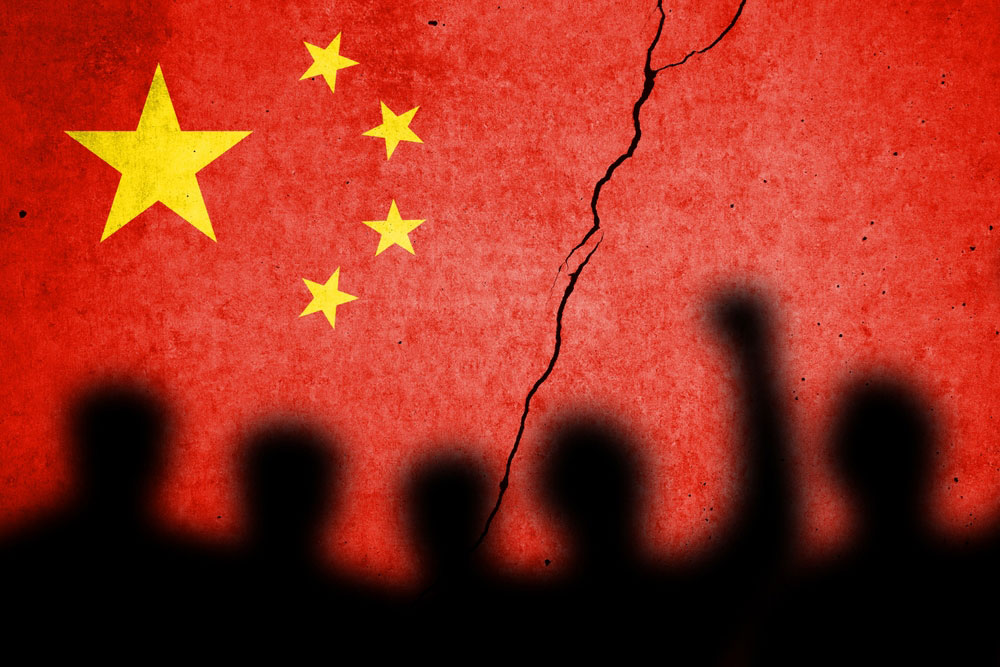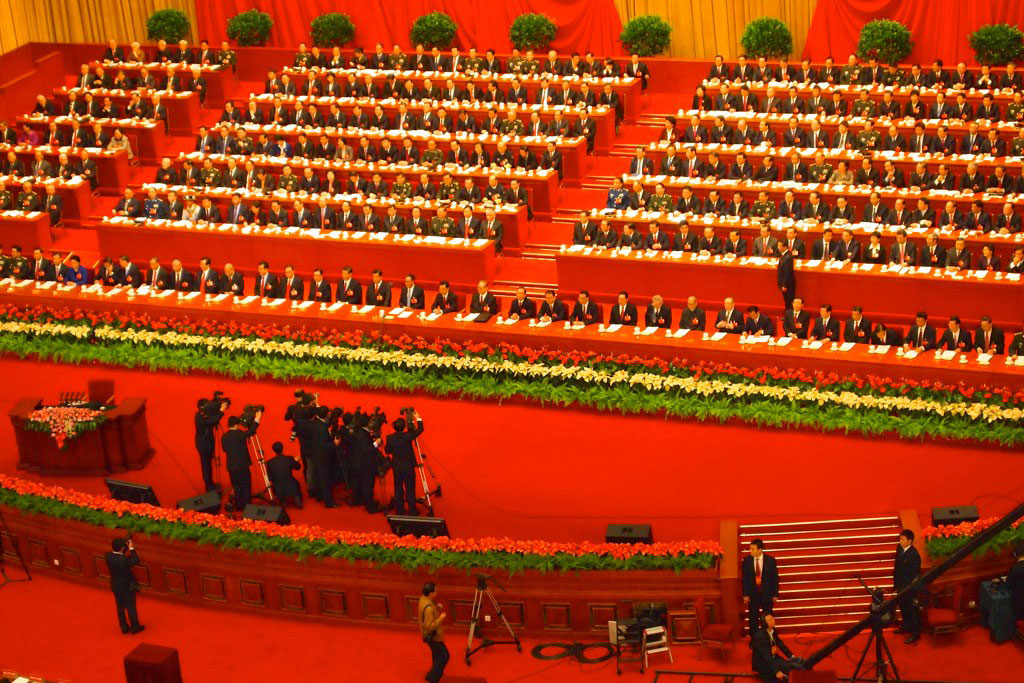The recent changes in China’s approach to combatting COVID-19—specifically, the relaxation of the country’s longstanding zero-COVID approach to prevent the spread of the virus—were both striking and abrupt. But these changes should not be interpreted as a sign that China’s battle with COVID-19 is coming to an end. In fact, China continues to face serious challenges as it attempts to change course, ranging from managing the reaction of the Chinese public to coping with the unpredictable virus itself.
In a meeting on November 30 with officials from China’s National Health Commission, Vice Premier Sun Chunlan—the senior official charged with coordinating the People’s Republic of China’s (PRC’s) response to COVID-19—announced that the country is facing a “new situation and new tasks” in its fight against the virus, citing as evidence the decreasing severity of the Omicron variant, China’s increasing vaccination rate, and the government’s accumulated experience of epidemic prevention and control.
Although PRC officials often describe China’s approach to combating the virus as one that undergoes continuous refinement—i.e., subtle tweaks intended to perfect a larger policy that remains unchanged—Sun’s remarks are nonetheless significant insofar as they signal a major shift in the approach of the Chinese Communist Party (CCP) to preventing the spread of the virus. Notably, Sun’s comments marked the first time that a senior PRC official has publicly acknowledged the weakening capacity of the Omicron variant to cause disease. Equally noteworthy is that Sun did not mention the country’s long-standing zero-COVID policy for preventing the spread of the virus through mass testing and the imposition of quarantines and area-wide lockdowns at the first sign of an outbreak.
Following the publication of Sun’s remarks, there has been a discernible shift in PRC public messaging pertaining to the country’s efforts to combat the spread of COVID-19. On 7 December, the PRC State Council announced ten new prevention and control measures, all of which signify a more lenient approach to combating the virus going forward. These measures include minimizing the amount of time for which lockdowns can be put in place, curbing the ability of local officials to impose travel restrictions, and no longer compelling certain segments of the population to undergo repeated COVID-19 testing. PRC media has also signaled that increasing the rate of COVID-19 vaccinations will be a key focus going forward, and PRC health officials have notably stepped up their efforts in recent days to inoculate the country’s vulnerable and under-vaccinated elderly population. Furthermore, PRC media has attempted to reinforce Sun’s remarks by citing research from PRC scientists on the decreasing pathogenicity of the Omicron variant and questioning the phenomenon of “long COVID,” in which those once infected with the virus continue to suffer post-COVID symptoms.
The abrupt change in tone is all the more striking when compared to PRC public messaging just a week earlier when authoritative PRC media played up the severity of the virus and appeared to be doubling down on Beijing’s long-standing zero-COVID policy. As recently as November 27, for instance, the front page of the CCP’s official newspaper, the People’s Daily, framed the struggle against COVID-19 as an “arduous task” that required “long-term persistence.” It added that “facts have fully proven that our prevention and control policy” can “withstand the test of history” and remains the most scientific and effective way forward.
Unacknowledged by senior PRC officials in their public statements—and not mentioned by any of China’s principal authoritative media outlets in their reporting on Beijing’s shifting line—are the protests that erupted in several major cities across the PRC the previous weekend (November 26–27). Triggered by news of a fatal apartment fire in the western Chinese city of Urumqi—a tragedy that appears to have been exacerbated by stringent COVID-19 controls that prevented residents from fleeing and firefighters from reaching the blaze—the demonstrations quickly and unexpectedly morphed into one of the most significant expressions of popular discontent over the CCP’s policies since the pro-democracy protests in Tiananmen Square in 1989. Although PRC media has been silent on the late November demonstrations, the timing of Sun’s remarks just days later is surely no coincidence.
Nonetheless, the shifting tone of PRC public messaging pertaining to COVID-19, coupled with the relaxation of the CCP’s COVID-19 controls now taking place, should not be interpreted as a sign that China’s battle with COVID-19 is coming to an end or that the party is declaring victory over the virus. Indeed, Beijing’s challenges with respect to COVID-19 are likely to mount even further in the weeks and months to come. COVID-19 cases are rising steadily in many parts of China, and the number of neighborhoods currently under some form of lockdown has reached 129 pages on the website of the PRC State Council at the time of writing (up from 56 two weeks earlier). Moreover, as noted in a previous CNA In-Depth article, China’s under-vaccinated population, coupled with the poor quality of domestically produced vaccines and insufficient number of ICU beds, leaves the PRC dangerously exposed to the virus as the winter approaches.
This raises three potential challenges for Chinese decision-makers going forward. They are as follows:
A worsening COVID-19 situation. If the COVID-19 situation deteriorates, will the CCP persist with the more lenient approach to combating the virus unveiled last week, or will it revert to the more draconian measures of the past in an effort to stamp it out? On this point, it should be noted that with local officials conditioned to shuttering businesses and locking down neighborhoods at the first sign of an outbreak, the arbitrary enforcement of the CCP’s broad guidelines for preventing the spread of the virus remains a distinct possibility.
Social discontent. The late November demonstrations were an unmistakable signal to the CCP that the Chinese public’s patience with the government’s COVID-19 controls is wearing thin. What is less clear is how the Chinese public will react should a new outbreak emerge. A key concern for the party is whether the Chinese public will perceive the CCP as having mismanaged the outbreak to the point where COVID-19 becomes a public health disaster in the PRC, resulting in rates of hospitalization and death that, until now, the party has bragged about avoiding. To borrow an analogy from the ongoing World Cup at the time of writing, a serious COVID-19 outbreak in the PRC more than a year after the rest of the world has learned to live with the virus could very well be perceived within China as an “own goal” of the party’s own making.
How to respond if demonstrations resume. Having seemingly won an unexpected concession from the CCP, protesters may feel more emboldened to take to the streets in the future to express their discontent with the CCP’s handling of the epidemic. Although seemingly caught off guard by the demonstrations the first evening that protestors took to the streets, public security authorities responded in subsequent days with a sizable and highly visible police presence in many major Chinese cities. Moreover, the following Monday (after the weekend protests subsided), Xinhua quoted Chen Wenqing—the CCP’s top internal security official by virtue of his position as the head of the CCP Central Political and Legal Affairs Commission—as stating that “we must resolutely crack down on illegal and criminal acts that disrupt social order and effectively maintain overall social stability.” While avoiding any explicit mentions of the demonstrations, Chen’s remarks nonetheless suggest that Beijing will have little tolerance for any future displays of public discontent with respect to the CCP’s COVID-19 policy.


